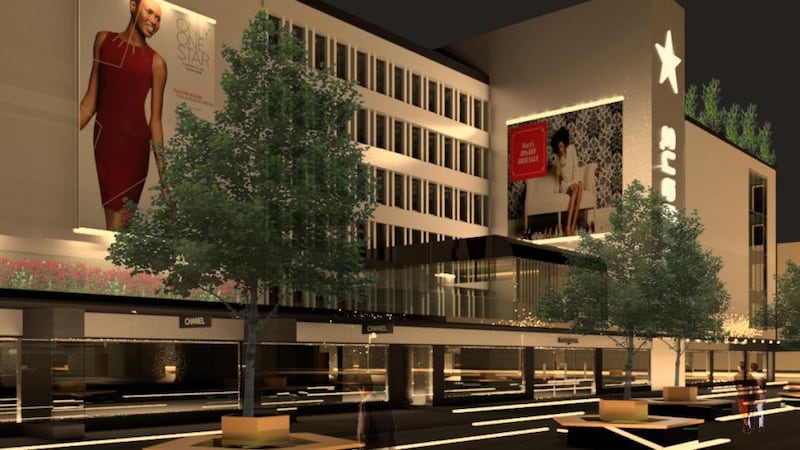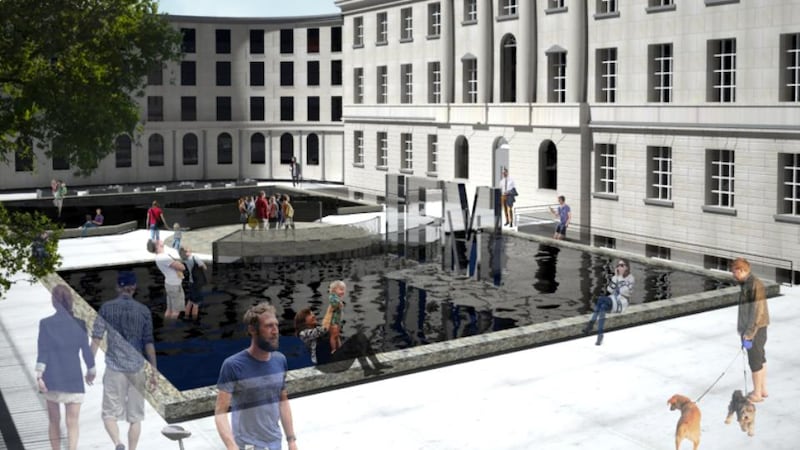O'Connell Street is a street you pass through to get somewhere else, rather than a destination in itself, says John McDonald, interior designer and head of 4th year students of interior architecture at Griffith College, Dublin.
With this in mind, he asked his students to consider how Upper O’Connell Street could be re-invigorated.
“The refunctioning of existing buildings is the main focus of work for these students so they looked at how individual buildings on Upper O’Connell Street could be re-imagined,” says McDonald.


“In many first world countries, retrofitting [older] buildings for new functions – banks to restaurants, churches to bars or big retailers taking over 19th-century buildings – is happening.”
The current exhibition of students’ work on the 2nd floor of Clery’s department store on O’Connell Street includes the re-imagined facades of the buildings, a public survey of people’s views on O’Connell Street and historic information on the street, much of which was originally built (or rebuilt) in the 18th century.
Norwegian student Hanna Guriby has re-imagined the Hammam building (11-13 Upper O'Connell) with its hybrid classical/art deco façade as an urban spa. "She has imagined the building as a luxurious urban oasis with a public area and gym on the ground floor and bespoke suites on the upper floors," explains McDonald.
American student Leanne Huber has re-imagined a 1970s building as Morgan's department store. "She consulted with the head of planning of Macy's department store in New York for her project," says McDonald.
Transformed
The lack of a Garda station on O’Connell Street is the basis of a project by Norwegian student
Tone Hyllvang
. She considered how the building currently occupied by McDonald’s could be transformed into a smaller version of Pearse Street Garda station. “People told us a Garda presence on the street would be welcome,” says McDonald.
Norwegian student Thea Foss has re-imagined the Rotunda Hospital as an Irish Famine museum. "The Rotunda Hospital is 300 years old, and the building fabric is no longer fit for purpose.
“If [or when], it is relocated, the building could become part of the cultural centre at Parnell Square with the new library, Dublin’s Writers Museum and the re-opening of the Pleasure Gardens in Parnell Square.”
The aim of the overall project is to see how the street could become lively again.
Although he thinks the replanting and landscaping of O’Connell Street has worked, McDonald says, the street is still hindered by the number of double-decker buses that go up and down all day long.
“There are also some massive empty sites that have never been redeveloped.”
The students are displaying their re-imagined facades of buildings on O’Connell Street as part of the Five Lamps Arts Festival. They have two more months to re-imagine the interiors of their chosen buildings for their end-of-year exhibition at Griffith College, as part of their honours degree in interior architecture.
Re-thinking O’Connell Street for the 21st Century, a multi-media exhibition by 4th year students of interior architecture at Griffith College, Dublin, will be on show in Clery’s department store until April 6th.











